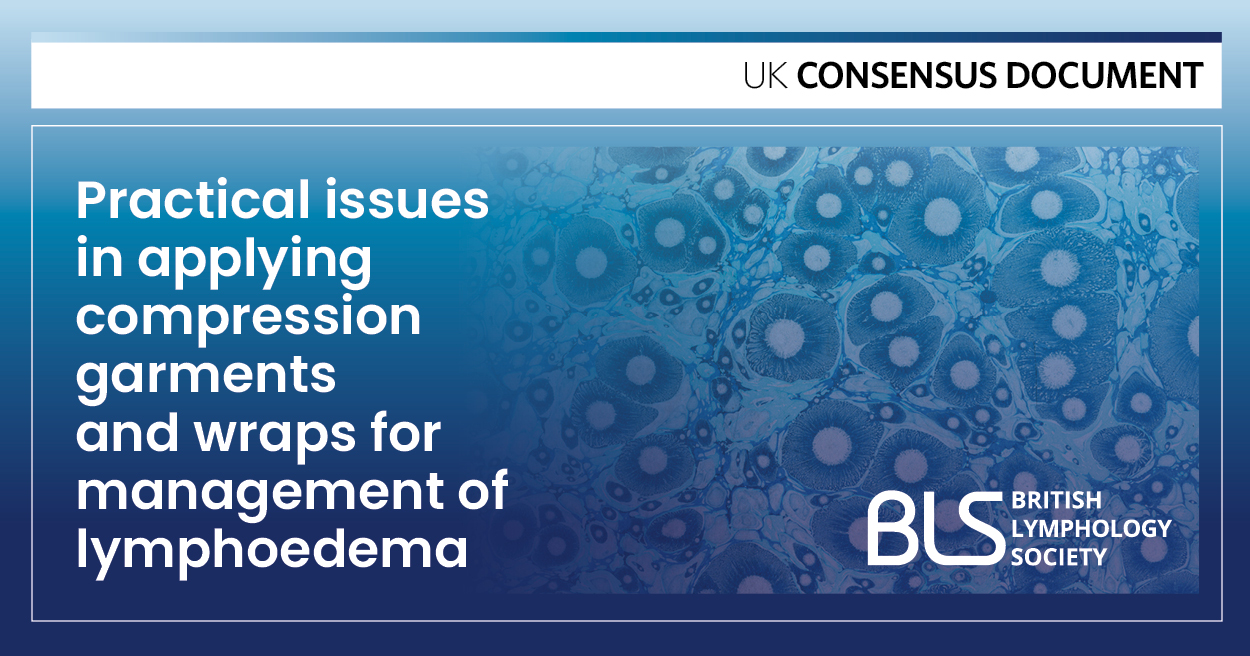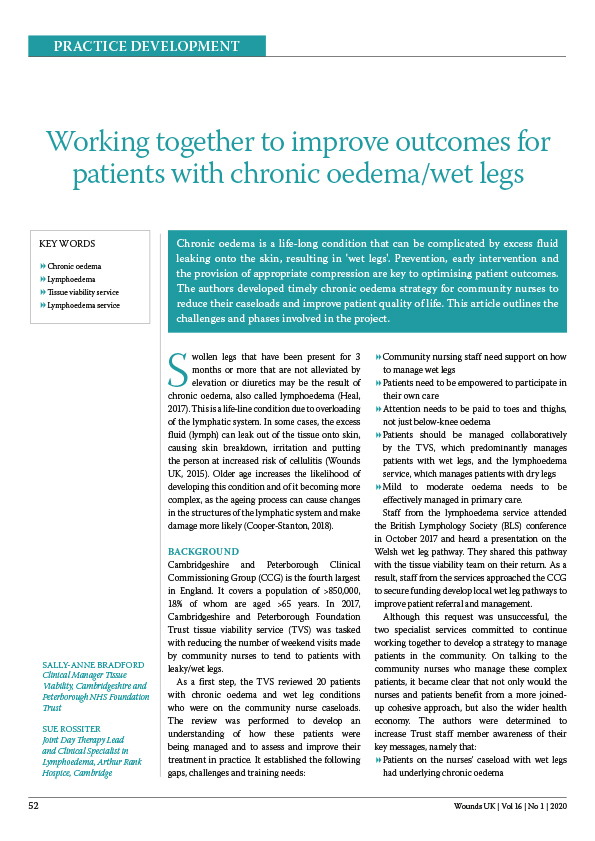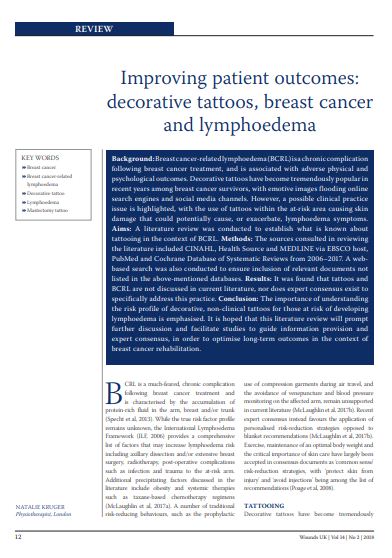Chronic oedema is a term used for swelling that has been present for at least 3 months in a limb or limbs and/or mid-line structures, such as the trunk, head, neck, or genitalia, and is often associated with leg ulceration (Moffatt et al, 2003).
Moffatt et al (2003) concluded that chronic oedema is as common as leg ulceration, with a prevalence of 1.33 per 100 000 people, rising to one per 200 people over the age of 65 years.
Chronic oedema of the lower limb is not always dealt with promptly or effectively, which can be due to cost, lack of knowledge and inexperience of clinicians, or delay of the patient’s contact (Moffatt et al, 2005; Morgan et al, 2005).
Chronic oedema affects leg ulcer healing and adds to the distress of patients in terms of increased exudate, pain, immobility, difficulty with putting clothing on (especially footwear), and the susceptibility to infection (Williams, 2003).






